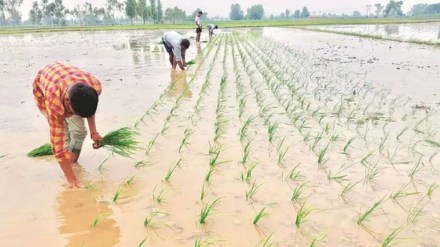Incessant rains in the four northern states – Uttar Pradesh, Madhya Pradesh, Rajasthan and Haryana – in the last few days have adversely affected standing kharif crops such as paddy, urad, bajra and potato.
Officials said that damage to the crops is likely to push up food prices further. Higher prices could also force the government to put more curbs on rice exports.
An area of concern in the latest inflation print has already been food inflation, which accelerated to 7.6% in August, from 6.7% in July. The jump was driven by elevated price pressure in cereals, vegetables, spices and fruit. Wheat inflation remained in the double digits in August, despite a ban imposed on exports of the cereal in May.
According to India Meteorological Department, Uttar Pradesh, the country’s second biggest producer of rice after West Bengal, has received 683% more rainfall than normal during October 1-10. This has adversely affected the paddy crop which was to be ready for harvest in the next two weeks.
Also Read| Finance ministry seeks expenditure proposals for first supplementary demands for grants
An official with the Uttar Pradesh Rice Mills Association told FE that around 60% of the standing paddy crops have been impacted because of rainfall this month. The rice millers have asked the government to relax the norm for paddy procurement by state agencies. Standing crops of potato and pulses too have been impacted by rains.
The government last month forecasted a decline of 6 million tonne (MT) in rice output for the 2022-23 crop year (July-June) given a 4% drop in paddy sowing this kharif season amid deficient rains in Uttar Pradesh, West Bengal, Bihar and Jharkhand.
The met department said that 67 out of the total 75 districts of Uttar Pradesh recorded excess rainfall since October 1.
During the southwestern monsoon period (June-September), Uttar Pradesh received 28% less rainfall than the normal benchmark. Fifty-three districts out of 75 in the state recorded deficient monsoon rainfall which resulted in a 4% decline in paddy sowing to 5.7 million hectare compared to the previous year.
Anant Bahadur Singh, a farmer from Amethi district of Uttar Pradesh, who has sown tur and paddy on his 100-odd acres is worried because of the inundation of his field because of huge downpours in the last couple of days.
“We are yet to assess the impact of the steps to salvage the standing crops as rains have not stopped yet,” Singh said.
Meanwhile, the state government has started to conduct damage assessment surveys of kharif crops.
Uttar Pradesh, the second biggest producer of rice, has a share of around 13% in the country’s rice production of 124.27 MT in the 2020-21 crop year (July-June).
Also Read| Bengal Durga Puja economy this year crosses Rs 45,000-cr mark: Stakeholders
The met department said that Madhya Pradesh (215%), Haryana (602%) and Rajasthan (443%) have received more rainfall than normal which has impacted kharif crops to varying degrees, traders said.
In Madhya Pradesh, the impact of recent rains has been on the harvested soybean crop. “Damages to soybean crops because of rains could be around 5%,” said Gagan Gupta, a trader from Sehore, one of Madhya Pradesh’s biggest mandi.
In Haryana, in anticipation of rains, farmers had harvested paddy early and the government agencies have procured more than 1.49 MT of paddy from the farmers till Monday since October 1, which is 40% more than last year. In Rajasthan, the impact of rains has delayed mustard and chana sowing in the state. The harvesting of kharif crops in Rajasthan has been largely completed.
The ministry of consumer affairs, food and public distribution last week stated that the average prices of 11 essential commodities such as edible oil, pulses and vegetables such as onion have declined by 2 – 11% in the last month, Inflation in cereals was 9.57% in August up from 6.9% in July, compared with 2.52% for pulses. Wheat prices rose by 15.72% in August 2022.
While the government has imposed curbs on certain varieties of rice exports to keep local supplies steady, it may have to initiate more supply-side measures to ease price pressure in food, especially in spices where the inflation was as high as 14.9% in August.
On the edible oil front, the food ministry had stated that the prices of edible oil in the international market are witnessing a decline and the benefit of the decline in the international prices of edible oil is being passed on to the consumers. “The industry has informed us that the global prices of different edible oils have fallen by $400-500 per ton in the last two months,” according to an official statement.
India imports around 56% of its edible oil requirement.
The government banned exports of broken and raw (white) rice exports last month while a curb on wheat exports was imposed in May 2022.
